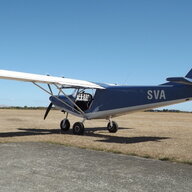-
Posts
3,085 -
Joined
-
Last visited
-
Days Won
26

IBob replied to RooviatorJ's topic in Aircraft General Discussion

IBob replied to RooviatorJ's topic in Aircraft General Discussion

IBob replied to RooviatorJ's topic in Aircraft General Discussion

IBob replied to RooviatorJ's topic in Aircraft General Discussion

IBob replied to skippydiesel's topic in Aircraft General Discussion

IBob replied to skippydiesel's topic in Aircraft General Discussion

IBob replied to skippydiesel's topic in Aircraft General Discussion

IBob replied to skippydiesel's topic in Aircraft General Discussion

IBob replied to skippydiesel's topic in Aircraft General Discussion

IBob replied to Marty_d's topic in Aircraft Building and Design Discussion

IBob replied to Marty_d's topic in Aircraft Building and Design Discussion

IBob replied to skippydiesel's topic in Aircraft General Discussion

IBob replied to skippydiesel's topic in Aircraft General Discussion

IBob replied to skippydiesel's topic in Aircraft General Discussion

IBob replied to skippydiesel's topic in Aircraft General Discussion

IBob replied to skippydiesel's topic in Aircraft General Discussion

IBob replied to skippydiesel's topic in Aircraft General Discussion

IBob replied to skippydiesel's topic in Aircraft General Discussion

IBob replied to skippydiesel's topic in Aircraft General Discussion

IBob replied to skippydiesel's topic in Aircraft General Discussion

IBob replied to skippydiesel's topic in Aircraft General Discussion

